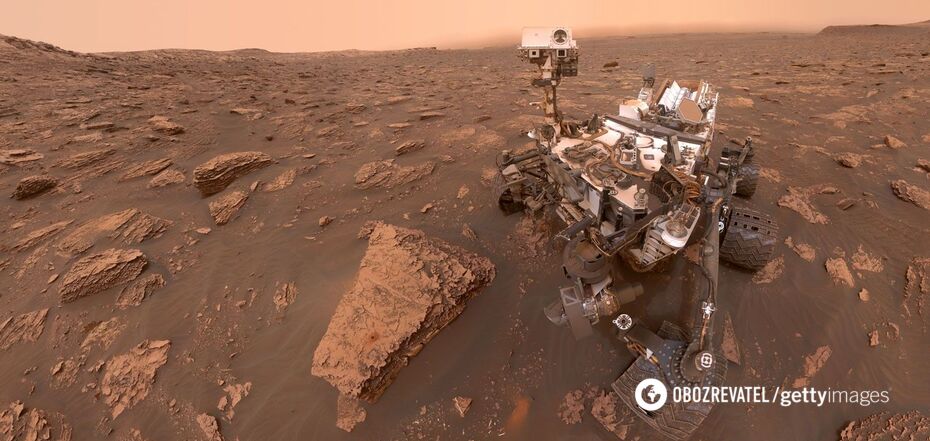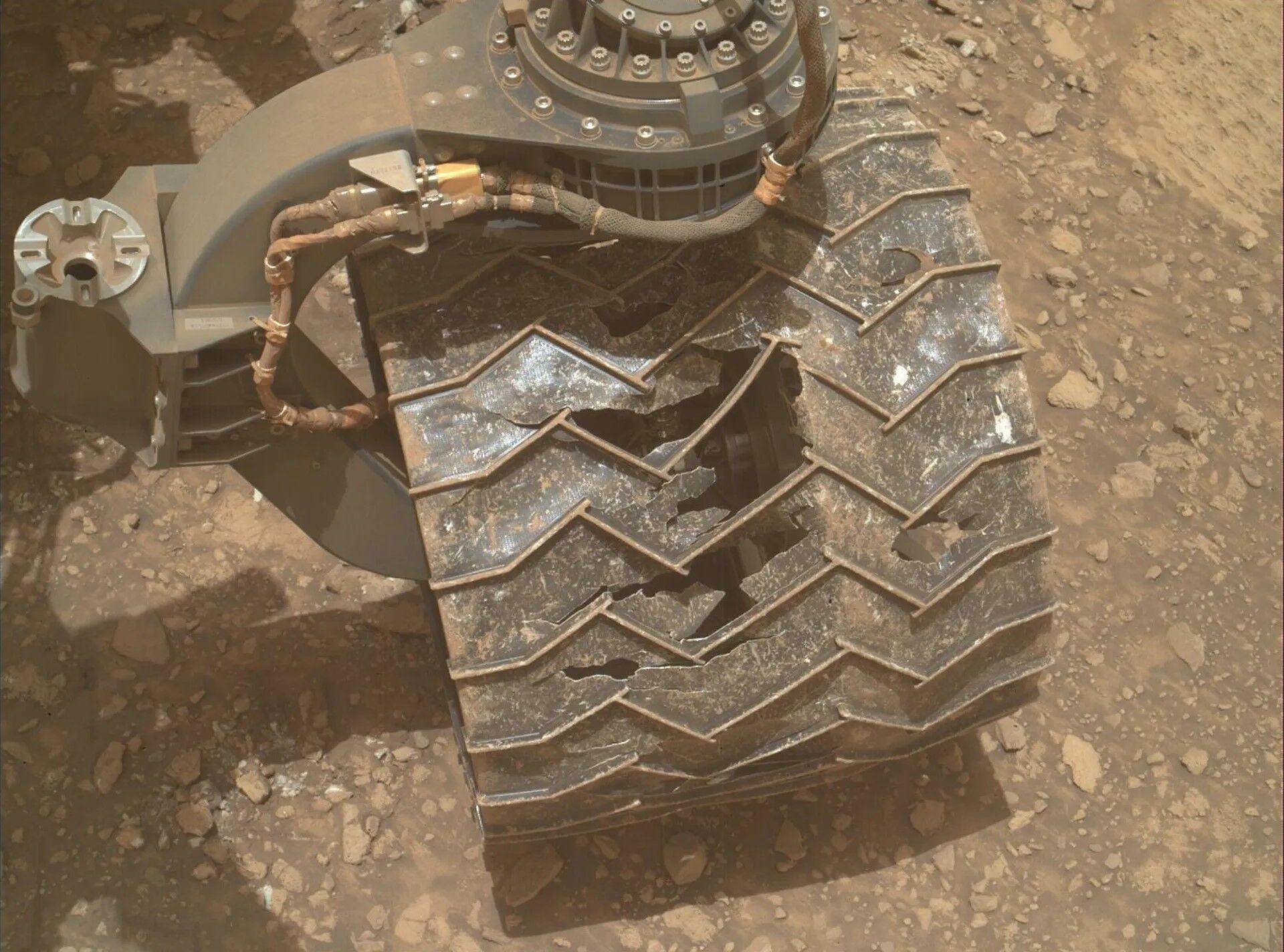News
The Curiosity rover has made a 360-degree view of the Red Planet and found strange rocks. Photos and videos
NASA's Curiosity rover has presented a 360-degree view of Mars. During the study, the NASA robot found strange sulfur stones.
Curiosity, which has been exploring the Red Planet for 12 years, took which has been exploring the Red Planet for 12 years, a panoramic view of the Gediz Vallis channel. The image shows several Martian objects surrounding the canal – Kukenan Butte, Pinacle Ridge, Texoli Butte, and even a distant glimpse of Gale Crater, Space.com writes.
According to NASA, Curiosity has been slowly climbing the Martian Mount Sharp since 2014, which was discovered in the 1970s. However, on the route of the rover, it came across the Gediz Vallis Canal, littered with boulders, which some scientists believe to be an ancient riverbed.
It is possible that water flowed through it many years ago, or strong winds were responsible for the formation. Or perhaps landslides cascading down from the higher elevations of Mount Sharp formed Gediz Vallis, which could explain the boulders and debris Curiosity found during its journey, the researchers said.
NASA said that among the debris, the rover saw mysterious white stones with yellow sulfur crystals inside. Since sulfur on Earth comes from hot springs and volcanoes, the research team does not understand where this element came from on the Red Planet.
"We looked at the sulfur field from all angles – top and side – and looked for anything mixed with sulfur that might give us clues as to how it formed. We've collected a lot of data, and now we have an interesting puzzle to solve," said Curiosity project scientist Ashwin Vasavada.
After more than a decade of arduous travel, Curiosity remains functional, albeit somewhat battered by Mars' hard surface, scientists say.
The rover's next destination is a formation of spiderweb-like patterns called a "box" that lies further along Mount Sharp. First seen in 2006 by NASA's Mars Reconnaissance Orbiter, this box may be the result of water carrying minerals into cracks along the mountain's surface, experts suggest.
"These ridges contain minerals that crystallized underground. Salty liquid water may have flowed there. Early microbes could survive in such an environment. Therefore, it is a great place for research," said Kirsten Siebach, a scientist from the Curiosity team.
Only verified information is available on the OBOZ.UA Telegram channel and Viber. Do not fall for fakes!





























